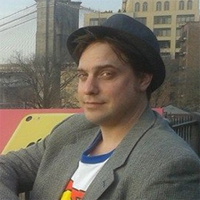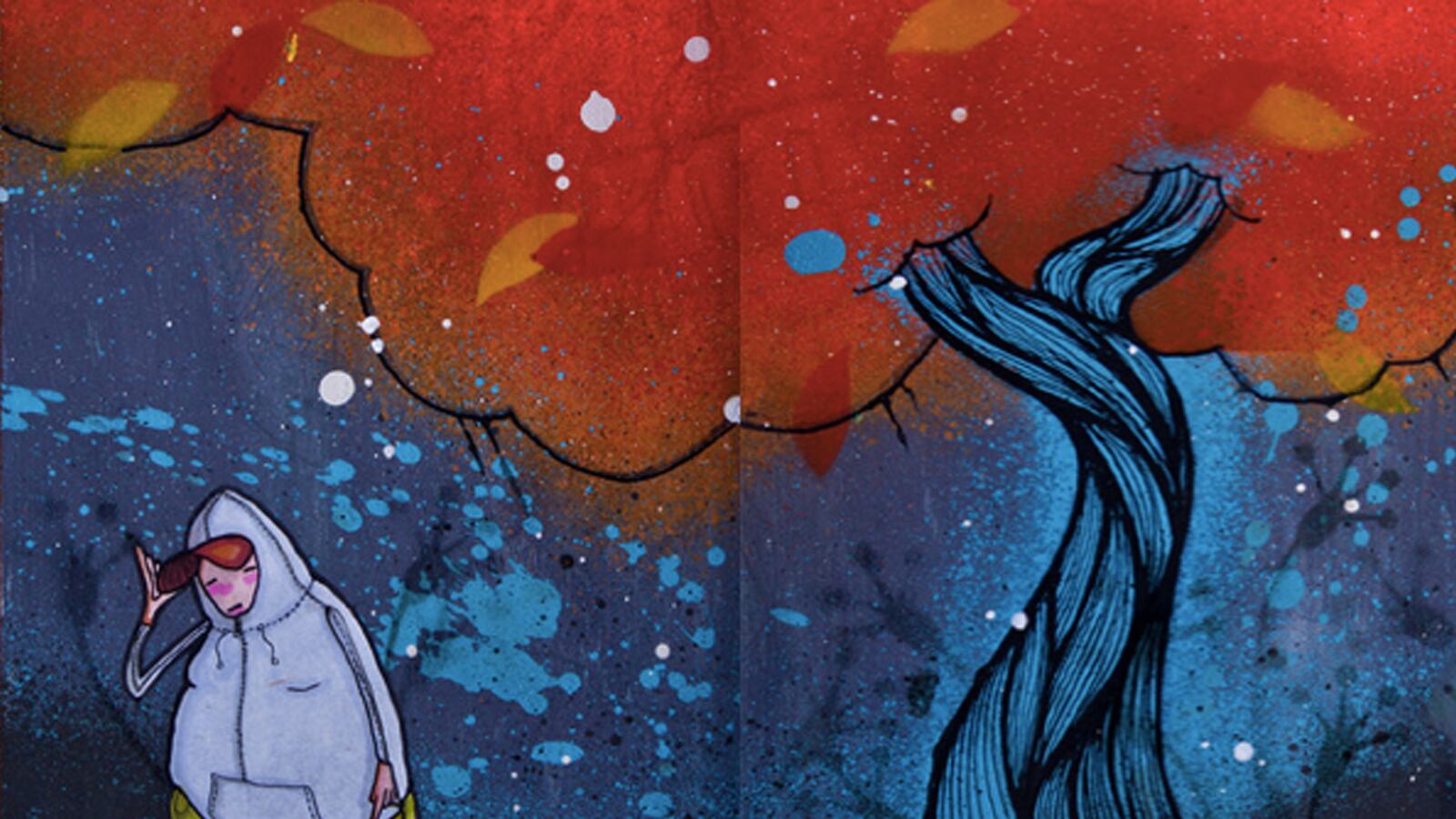The Sketchbook Project is trying to change our relationship with art. When the Internet was young and art was old, as has actually remained the case, we were promised new ways of communicating. Everything was to change, including art and how we experience it. We would soon virtually stroll through Van Gogh’s Sunflowers and enjoy paintings done by computers. Culture was to rapidly evolve. But it didn’t; I haven’t yet seen the backside of Botticelli’s Venus. Instead of anything online, the most novel way I have found to experience art is through a little sketchbook, one of 32,000 of them, in a cozy gallery in Williamsburg. Soon my doodles will join that library.
Advertised as the “largest collection of artists’ books” in the world, the Sketchbook Project library is an appealing place to while away an afternoon. Most museums operate in superlatives; they present the best of whatever they’re dedicated to. The Metropolitan Museum of Art displays the greatest art as determined by the test of time and professional curators. Museums of natural history display the biggest meteorites, tallest dinosaurs, and millipedes with the most legs. But the Sketchbook Project is not in that game.
Instead, your $25 entry fee gets you a sketchbook that appears handmade. It is 32 pages long and looks like it was fabricated during the Civil War. The pages are blank; you can buy olde-time pencils to draw with or use your kids’ crayons. You don’t even have to know how to draw; theoretically, you could turn in a blank book.
When you mail it in or bring it back, you include descriptive words that would lead a consumer to your work. Familiarity with search-engines helps, a strange quirk of working in this retro medium. Optimization techniques allow people to discover you, just like the meta-text of a website. And yet some of the Sketchbooks are bound by twine.

Once you fill in the book, you send it back where it joins the others on the shelves and travels with the annual touring trip. That’s as far as the lower fee takes you. The more expensive package includes digitization of your work and availability online, searchable by content on sketchbookproject.com. About half of the submissions join the digital library this way. That is the project’s nod to the contemporary world.
The library in Williamsburg itself is illuminated with antique filament bulbs and everything inside is of the past or a nod to it. It’s stylish and only a little pretentious; the antique shops surrounding New York City will soon run out of furnishings for this fashion of decorating Brooklyn.
Steven Peterman, who founded the endeavor with Shane Zucker in 2006, explains that they “have always been more interested in interactive art than art made by an artist alone in a studio. I never felt satisfied creating my own art, nor did I set out to change the art world. I just found something the people were excited by, and kept going with it.” That was in 2006 in Georgia, but in 2009, the project moved to New York and exponentially grew across the globe. About 70,000 artists, or people who are artists for that day, have been involved and 31,487 have contributed sketchbooks from 135 countries. Peterman adds: “I believe we have created a global community. People come to our exhibitions each year and meet others; so many participants have started conversations across the globe because of their connection with the project.” A community formed by the unification of consumer and creator; the Met certainly never achieved this.
But I still visit the Met when a great painting is brought from Europe, although without adding my own doodle to it. However, back in the analog world of paper and ink and dust, browsing through their library and enjoying the contributions of others while your neighbor is examining, say, yours, is physical and participatory. At the very least, it is a new way of arranging a museum. And a unique method of uniting creator and consumer.
It also throws the question of who determines what is art into the air because of the sudden ability of creation without the mediation of professionals like publishers and record companies. In earlier centuries academies existed to decide what was art, while today we have gallerists and critics at the gate. The Sketchbook Project has sidestepped this; the gatekeeper is just a pleasant young woman who processes your credit card, explains the procedure, and gives you your blank sketchbook.
But what about a pornographic entry? Or a pedophilic one? My experience with uncurated forums like toilet stalls and websites that let you comment under a pseudonym is that they bring out the worst in humanity. I have seen the ugliest thoughts expressed, sometimes in verse, while using public restrooms. Discarding the idea of testing the waters with a provocative contribution, I just asked what they would do.
Apparently it’s never happened, so she didn’t know. So far, all of the participants have been similar enough in politics and aesthetics to not offend one another, even though they come from all around the world. But one day a submission might arrive with strong views on abortion, or racial disparities. Or Hitler. Is there room in an uncurated museum for censorship?
“Minimal censorship,” Peterman told me over email. “We do want people to tell their story, even if we disagree with it. We have an adult content filter. It’s mostly used for children, but also adults that do not wish to be a part of that. Although we believe something very offensive would be unwelcome in our community, it would be balanced by 30,000+ voices with non-offensive views. On the other hand, art is about sparking of conversation. If people are talking, then its served its purpose. We see the value in having an interactive platform, where anyone can share their point of view. But we would remove a book that is a physical hazard to the health of the viewer or our staff.”

That is a more tolerant approach than that of traditional museum curators. When the work of Balthus was again decried as pedophilia in the German press earlier this year, an exhibition in Essen was cancelled. But the Sketchbook Project confines itself to restricting only submissions that might endanger the staff. However, this question has not yet been tested with a Balthusian depiction of young girls, or a sketchbook devoted to the Confederacy.
In 2011, the Project’s directors started counting the checkouts to see if there were more contributors or consumers. They have reached 200,000 checkouts now, without the digital viewers. “The interesting thing is that people who would not normally like interacting with art, or enjoy a traditional museum, always end up loving our project. Because you get to be so much more than a viewer, people of all backgrounds have embraced our project,” says Peterman.
“When starting, we consciously played with the mix of digital and analog,” Peterman continued. “We acknowledge the fact that we would not be a global community without the Internet, but the result is a physical, paper-based object. This makes the project unique.”
Peterman comes “from a very analog background; printmaking,” he says. Zucker was a graphics specialist. It’s no accident that they favor the dated.
There have been many reactions to the digitization of our lives, like the resurgence of vinyl and the entire Maker movement. But the Sketchbook Project is not just Luddite, analog retro-fetishism. “We truly are interactive and open to everyone,” Peterman told me. “I don’t know where else you can not only hold an artwork, but also submit your own. If you come to one of our exhibitions, or the library on a busy day, you will find dialog flying over the sketchbooks around our communal table. The beauty of the project comes from the ratio of professional artists, recreational artists, and just creative people. You walk into our library and you are surrounded by 30,000 stories.”
Did the Project discover a new way of seeing? No, the tools used are just old fashioned, and the images produced are drawings, hardly a new invention. But does the project offer a novel way to interact with culture? The best of art can communicate to its viewer across centuries. But artworks with such power are rare and priceless. And don’t come with a community.
“We are a resource like no other,” says Peterman. “No online art community is full of creative artists waiting to communicate with the viewer.” The Sketchbook Project may not be an invention on the scale of the wheel, but it’s a new way to experience art. After walking museum hallways my entire life, I am grateful for the opportunity to be on the other side of the wall. I’m filling out my own sketchbook to join the library. And not with naked Hitlers either, in case you were wondering.






